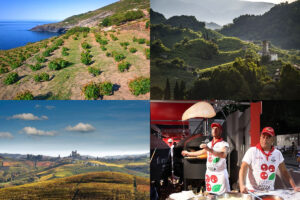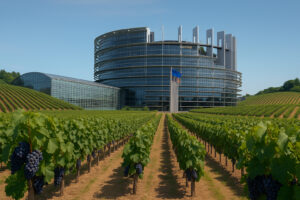10% of Italians buy directly from the producer, a habit that is gaining more and more ground over farmers’ markets (2%), representing a niche that has been more talked about than actually used. In the future, in fact, consumers will increasingly turn directly to producers, with 64% interested in buying directly from the manufacturer. This trend emerges from the Ispo study by Professor Renato Manneheimer to identify public preferences in food purchases. The results of the study, first in Turin and then throughout the country, are part of the Italian Confederation of Farmers, Confagricoltura, project “From producer to consumer”.
The mission is to network a qualified group of farms, which rely on the protection of a trademark and an internet portal (www.dalproduttorealconsumatore.info) to undertake and comply with a strict code of behavior based on food safety, authenticity, traceability and transparency, enabling consumers to find out the who, where and how about products. To explain in more detail the Confagricoltura strategy on marketing and distribution, President Federico Vecchioni refers to the project “Fertile Future” in its phase of full implementation: “beyond niche initiatives,” he highlights, “agriculture cannot ignore a predominate sales system. We intend to make the most efficient structures in the distribution system through sector agreements with large-scale distribution. Our project, which has broad consensus in the political, business, finance and credit communities, will ensure the supply of made in Italy products and decisively influence the distribution of the value chain in the agriculture and food-distribution industry - for the total benefit of producers and consumers”.
Individual farmers, cooperatives, associations and partnerships can join the Confagricoltura project “From producer to consumer”. The offer includes wine, fruits and vegetables, honey, raw milk, cheese, meat and salamis. Each company will have its own page with a short profile that outlines the historical characteristics and the methods of production of the specialties offered to the public; list of goods for sale; opening hours of the company store; display on the road map and the sites of local markets (all farms participating in the Confagricoltura project also pledge to provide the public with complete information about products on sale, with prices clearly displayed and no obligation to buy).
According to the Ispo survey, 87% of consumers prefer the supermarket and the hypermarket, 24% buy at their local market, 23% in shops and 22% in discount chains. The frequency of buying is “multiple” times a week for 50% of respondents, compared to 43% who buy only once a week. The interesting fact, according to the survey, is the difference from 12 months earlier, when 15% made purchases more frequently.
This is a typical result due to the crisis: buy less to waste less. The reason that prompts them to contact the producer directly are first, being able to save while buying quality products (38%), but another incentive is the opportunity to combine the convenience of going shopping at the farm with an occasion to take a pleasant trip out of town (this is a major factor, reveals ISPO, especially for the elderly, pensioners and those living in small towns, 15%). Regarding agricultural products, Italian consumers reveal they pay attention to five main points: food security (fundamental for 93% of respondents); place of origin of primary materials (81%); the place of production, processing and packaging the product (79%); certification of products with Dop / IGT (81%) and the ability to purchase directly from the producer (64%). In the sample interviewed by ISPO for Confagricoltura, as much as 50% are interested in all five of these points, followed by 23% who are interested in 4 out of 5. Of course, the quality-price ratio is important (64%), while on the knowledge of the differences between the marks of protected origin (IGP, DOP, DOCG, DOC, IGT) and marks of production area (Parma, Langhe, Val di Non) 75% of respondents could not answer, only 12% responded and distinguished a difference and only 3% gave a correct answer.
Copyright © 2000/2025
Contatti: info@winenews.it
Seguici anche su Twitter: @WineNewsIt
Seguici anche su Facebook: @winenewsit
Questo articolo è tratto dall'archivio di WineNews - Tutti i diritti riservati - Copyright © 2000/2025








































































































































































































